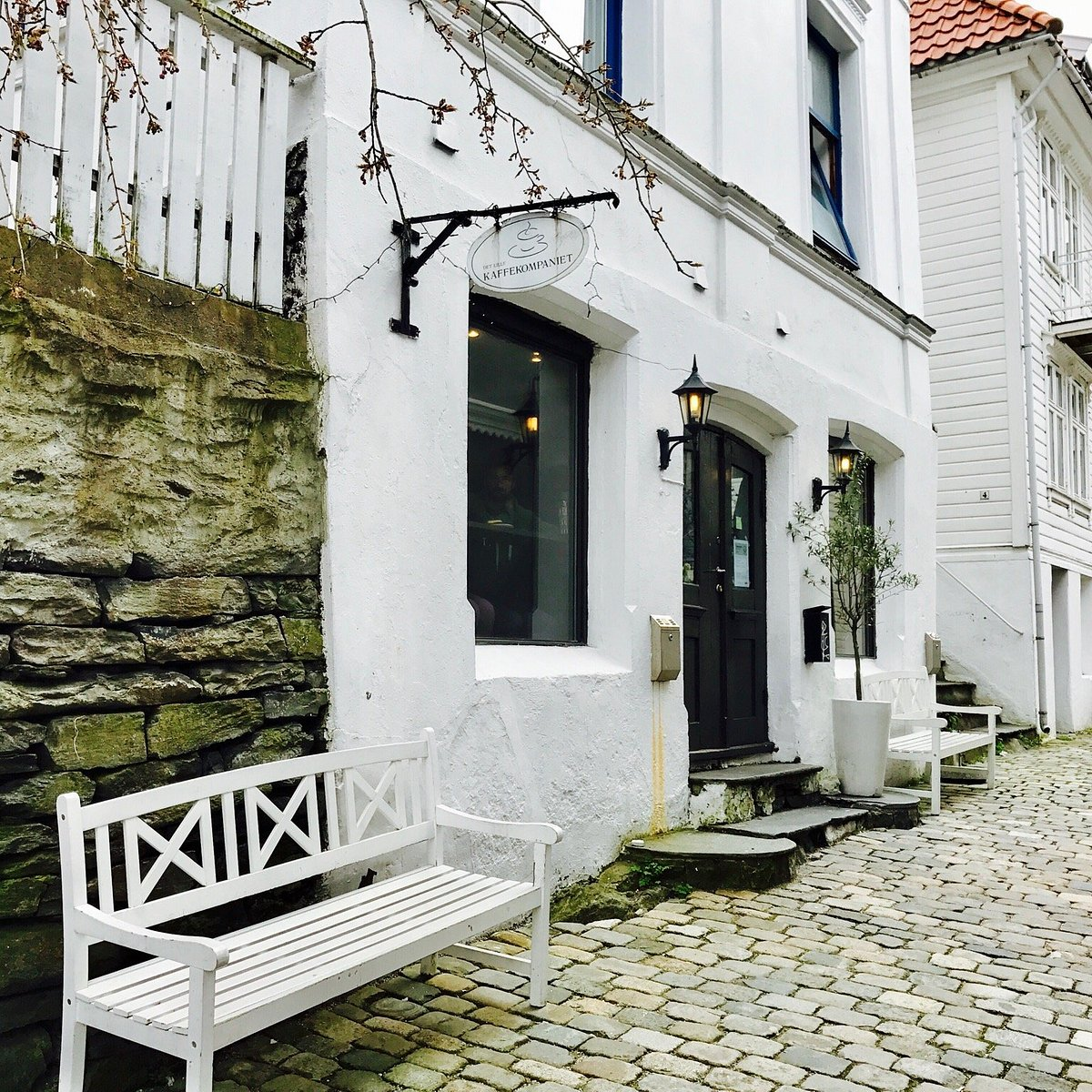Interview 2: Camilla & Grethe
On a chilly day in early November, Camilla Røren, Grethe Fløholm, and I settled into one of just a few tables in Det Lille Kaffekompaniet. As Grethe’s tea steeped and I opened my notes, we chatted about how classes were going at Bergen Katedralskole (nicknamed Katten), which is the high school where Grethe and Camilla work as teachers. Not only are they teachers, but they are the teachers who I was lucky enough to be paired to work closely with throughout the year; they have welcomed me into their classrooms and also into their homes and lives in Bergen. Of course, what binds us together at the core is education, and so I was especially interested in learning about the Norwegian education system—and their experiences as students and teachers apart of it—through their eyes.
However before getting into all things education, I wanted to hear about their lives outside of education, and so I asked them to tell me a little about themselves and what they enjoy doing for fun.
Grethe, her partner Arild, and their son Gunnar (6) live in Bergen, and she spends much of her of time outside of work with them doing everything from taking Gunnar to dance classes to practicing country flag flashcards (which is incredibly impressive to watch and incredibly humbling to partake in). Beyond spending time with them, she enjoys knitting, fishing, and pottery.
Camilla also enjoys spending time with her children, Ada (20), Lukas (18), and Jakob (13.5) and husband Karim, outside of work. Additionally, she enjoys knitting, running, and reading and is even a member of two book clubs! More generally, and something I came to my own conclusion on, is that she is a true adventurer. The stories are incredible.
…
As we started discussing education, I learned that they both studied at the University of Bergen (UiB) and have been (living) and teaching here since. Both are extremely well studied regarding depth and breadth.
Camilla received her master’s in English at UiB, along with a bachelor’s in Norwegian and additionally completed one-year studies in religion, history, and pedagogy. Grethe also received a master’s in English, in addition to bachelor’s degrees in media studies and psychology and also completed a study in pedagogy. Woah. As I said, both are extremely well studied.
The requirements for teaching high school have changed in some ways since they were students. Notably, now students pursuing careers as teachers complete a five-year education program, in which they earn their bachelor’s and then master’s degrees in education, which therefore has pedagogy sprinkled throughout. However, when Camilla and Grethe were studying, the major was independent from pedagogical instruction, hence the year of pedagogy. That being said, and while this may be different, one thing has stayed the same; teachers are required to be highly educated and spend many years studying.
This led us to an interconnected topic—the strike during the first seven weeks of the academic year. Upon my arrival to Katten, several of the teacher unions in Norway, including the unions that Grethe and Camilla belong to, were on strike. Throughout the first nearly two months of the academic year, the union strategically pulled teachers from teaching to join the strike with a goal being a fair increase in the salary for educators. While they were offered the yearly increase in salary, just as other workers receive a yearly increase, the increase was not enough to make up for inflation, and much less make up for lagging behind other comparable jobs. However, the strike ended in a seeming defeat; the government forced a resolution, and the teachers did not receive anything.
While this felt rather despairing, during the interview they both offered positive insight as to the impact the strike may have. They told me that the strike might lead to a proposal for “Teacher” to become a protected title and that it absolutely did create more awareness regarding the discrepancy between the requirements for education and pay that teachers receive.
…
After that, the conversation shifted to chatting about what it is like as an educator in a classroom in Norway today and the current pedagogical approaches that are now prioritized—such as reflection and in-depth connections—within the education system.
Grethe commented on the value of reflection but also commented on how these general aims can be challenging to implement and hard to test.
Camilla noted that “the competence aims are…aloof…you have to know to know but now do you know if you know…it has become so fragmented.”
I told them that this struck me as familiar, and that the curriculum seems to be headed this direction in the U.S. as well. As often as differences between the education systems are emphasized, this seems to be an area where they overlap. Where should the line be drawn between education that focuses on teaching students’ ways of critical thinking and education that provides students with factual information that they need to know to adequately understand the world? As we snacked on our pastries, we discussed how what is considered common knowledge is shifting and the price that comes at.
…
To conclude the interview, we took a step back from education to talk about identity and being Norwegian. The final question I posed was this: “What is your favorite part of being Norwegian or what part of being Norwegian makes you proudest?”
Grethe began by saying that she is proud that “Norwegians are typically mild tempered” and genuine. They don’t toss around words; “If someone calls you a friend, then you really are their friend.”
Camilla smiled in agreement and then added that she loves the national holiday and the concept of “dugnad,” which is the Norwegian idea of coming together to accomplish something for the community with no strings attached—just for the sake of doing good.



Comments
Post a Comment